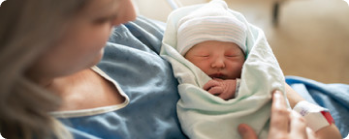Mount Nittany Health saved my life

Gerald Hoy
Gerald Hoy, a commercial roofer, was putting a roof on in Bellefonte in April when he started experiencing the classic symptoms of a heart attack.
Gerald Hoy
Gerald Hoy, a commercial roofer, was putting a roof on in Bellefonte in April when he started experiencing the classic symptoms of a heart attack.
“I started sweating and was short of breath, but I didn’t have much pain and I wasn’t positive I was having a heart attack,” he says. “I drove to the Geisinger clinic on Bishop Street, and when I got out of my truck and started to walk in, I had to stop and rest.” Inside, a nurse asked him if he felt all right, and he said he thought he might be having a heart attack. They treated him with aspirin and nitroglycerin and called an ambulance, activating a heart attack alert.
At Mount Nittany Health the medical team put in three stents. “They told me I had blockages in an artery that were very dangerous—people often die when that artery is clogged,” he says. “That was Monday morning, and I was doing pretty well after receiving the stents.
“They had moved me Tuesday afternoon from the ICU to another room in the heart unit. On Wednesday morning I got up at 6, brushed my teeth, and got back in bed. That’s the last thing I remember. I am told around 6:45 I set the alarm off because my heart stopped completely. It turns out the code blue team was meeting that morning right outside my door, so when the alarm went off, they were there within seconds. One of the team members gave me CPR. I was out about 15 minutes, and at one point they called my wife to ask her if they should keep giving me resuscitation.”
The medical team inserted a fourth stent Wednesday afternoon, as well as a defibrillator and a pacemaker on Thursday.
“I was very lucky,” Gerald says. “I was in the right place, and I couldn’t have gotten better care. I think the CPR they did really kept me going. The doctors did a great job, and I couldn’t ask for nicer nurses. They were excellent.”
Since opening our new state-of-the art cardiovascular pavilion just over a year ago, our lifesaving team of highly skilled board-certified cardiologists, along with the cardiovascular pavilion team, performed hundreds of critical cardiac procedures. Lives, like Gerald’s, are being saved because of your support of the Golf Classic.
Ron Iadarola
It was January 26, 2013, about 9:30 p.m., and Ron Iadarola felt something was off. “I just felt funny,” he says. I had no pain, but I had a strange feeling in my shoulders and back, and then I started to sweat. I went outside and looked up into the sky and I asked my maker, What do you think? The answer I got was, You might be having a heart attack—you’d better call 911.”
Ron Iadarola
It was January 26, 2013, about 9:30 p.m., and Ron Iadarola felt something was off. “I just felt funny,” he says. I had no pain, but I had a strange feeling in my shoulders and back, and then I started to sweat. I went outside and looked up into the sky and I asked my maker, What do you think? The answer I got was, You might be having a heart attack—you’d better call 911.”
Ron woke up his wife, who called 911. Ron remembers paramedics putting monitors on him but then nothing else. “I had flatlined within a few minutes, and they gave me CPR for about 20 minutes,” he says. “During that time I felt nothing but warmth and saw a lot of light.”
Ron was taken into the ambulance, where paramedics continued to monitor him and used paddles to shock his heart into a normal rhythm. He woke up as he was being taken out of the ambulance when it arrived at the emergency room.
“I remember the team meeting me there and taking me into the ER, but I kept going in and out,” he says. “They quickly took me to the cath lab and put in a stent. The next morning I woke up at about 6, and my cardiologist, Dr. Ambrose, was standing at the foot of my bed. He told me, ‘You had a pretty rough night. You were gone 15 to 20 minutes, and we didn’t know what to expect, but you look pretty good for all you’ve been through.’ He explained to me that the plaque in my artery broke away and that cut off the blood flow to my heart.”
Ron credits the team at Mount Nittany Health for saving his life that night. “They did great work,” he says. “I appreciate them and I’m thankful.”
Since opening our new state-of-the art cardiovascular pavilion just over a year ago, our lifesaving team of highly-skilled board certified cardiologists, along with the cardiovascular pavilion team, performed hundreds of critical cardiac procedures. Lives, like Ron’s, are being saved because of your support of the Golf Classic.
Al Landis
In July 2015, Al Landis was leaving his wife’s office, headed toward his truck. “I started my truck, pulled out and got to a slight incline in the parking lot, and that’s when things happened,” he says. “Basically, I was dead.”
Al Landis
In July 2015, Al Landis was leaving his wife’s office, headed toward his truck. “I started my truck, pulled out and got to a slight incline in the parking lot, and that’s when things happened,” he says. “Basically, I was dead.”
With the truck still running, Al was slumped over the steering wheel. Two passersby ran to call 911, and the driver of a garbage truck, stuck behind Al’s truck, started CPR (the driver had just finished CPR training two weeks earlier). When the police arrived, they shocked him twice with defibrillators.
At Mount Nittany Medical Center, Al’s cardiologist, Dr. Henry from Geisinger, happened to be there and got involved in Al’s treatment immediately.
When Al’s wife, Marsha, arrived at the hospital, Dr. Henry told her they didn’t know how long Al had been without oxygen, and he was on a ventilator. The prognosis wasn’t good. “I said, ‘I’ve had him for 48 years but I want him longer, so please do whatever you can,’” Marsha recalls.
The Mount Nittany Health team lowered Al’s body temperature for about 24 hours—a treatment that can reduce damage to brain cells after a cardiac arrest. Soon after the team started warming him back up, Marsha got the call that he was awake and responsive.
“I don’t remember any of that,” Al says. “I was in intensive care for eight days, and they put in a pacemaker and defibrillator. When I left the hospital, I got to the door and looked out and saw the black cows in the field, and that’s when I truly woke up and knew where I was and what was happening.
“It’s amazing how it all came together. I have only wonderful things to say about the care I received at Mount Nittany Health. Even though I didn’t know what was happening at the time, I got the best end result – I’m still here.”
Since opening our new state-of-the art cardiovascular pavilion just over a year ago, our lifesaving team of highly-skilled board certified cardiologists, along with the cardiovascular pavilion team, performed hundreds of critical cardiac procedures. Lives, like Al’s, are being saved because of your support of the Golf Classic.
Michael Norris
Michael Norris and his wife were planning to go on an early-morning bike ride on a hot, humid Sunday in July 2019. “We got up around 5 to beat the heat,” he says. “But when I woke up I wasn’t feeling right. I didn’t have much pain, but I felt very anxious. I told my wife I think she needed to take me to the hospital.”
Michael Norris
Michael Norris and his wife were planning to go on an early-morning bike ride on a hot, humid Sunday in July 2019. “We got up around 5 to beat the heat,” he says. “But when I woke up I wasn’t feeling right. I didn’t have much pain, but I felt very anxious. I told my wife I think she needed to take me to the hospital.”
At the hospital entrance, Michael remembers a triage nurse looking at him with a perplexed expression, then nothing else. His wife told him he collapsed to the floor and was carried into the ER. “They said I had no heartrate for two minutes. They put me on a table and did compressions—they brought me back to life,” he says.
“And this is the amazing thing. At 6:50 in the morning, I’m on the table, dead for all practical purposes. By 7:30 they had me in the cath lab and Dr. Jones is repairing my heart by inserting a stent. By around 9 I’m in the ICU and they’re asking me what I want for lunch. So I had a turkey dinner.”
Michael points out an interesting coincidence. The engineering firm he used to work for had done some work for the hospital. “It turns out that I had participated in the design of the cath lab where my life was saved,” he says.
Michael describes himself as “going full tilt” after having 80 percent blockage in an artery. “It’s unbelievable. I think about all the people who helped me, and how they drop everything and come in when they’re on call. That’s commitment.”
At Mount Nittany Health’s annual get-together for cardiac survivors, Michael had a chance to speak with the team and doctors who cared for him. “I really appreciated being able to say in person to them, ‘Thank you so much for saving my life.’ Thinking about it brings tears to my eyes.”
Since opening our new state-of-the art cardiovascular pavilion just over a year ago, our lifesaving team of highly-skilled board certified cardiologists, along with the cardiovascular pavilion team, performed hundreds of critical cardiac procedures. Lives, like Michel’s, are being saved because of your support of the Golf Classic.



